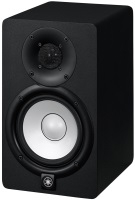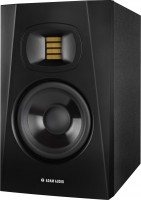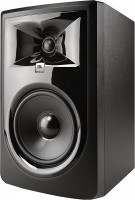KRK Rokit 5 G4 (RP5G4)
 |
KRK Rokit 5 G4 | ||||||||||||||||||||||||||||||||||||||||||||||||||||||||||||||||||
|
| |||||||||||||||||||||||||||||||||||||||||||||||||||||||||||||||||
Always clarify the specifications and configuration of the product with the online store manager before purchasing.
Catalog KRK 2025 - new arrivals, bestsellers, and the most relevant models KRK.
Hate it or love it
At one time, 50 Cent and The Game had a hit "Hate It Or Love It", which perfectly describes the history of Rockit monitors. They are either loved with all their hearts, or they hate them just as much. They are loved because of a well-recognized sound with a powerful pronounced bass, a failed middle and a noticeable colour. For example, Rockit was popular among DJs for whom listening to new records at home was no less important than working in Ableton or Cubase. They hate them for exactly the same reason: when working and mixing in Rockit, everything plays juicy, powerful and provocatively, but as soon as you turn on the demo on more expensive and honest monitors, all the enthusiasm disappears somewhere, and hitherto imperceptible jambs with equalization, panorama and dynamics.
Five for homework
Now the good news. All of the above was more relevant to the first three revisions of Rockit. In the case of the G4, KRK did an A+ homework and got rid of a lot of old problems. The signature aggressive and bassy disposition remained, but the sound became more even, honest and detailed. Now it looks much more like proper studio monitors than hi-fi acoustics with a noticeable colour. Plus, a built-in limiter was added to protect the amplifier and speakers from accidental overloads and those who like to “heap to the maximum”. When overloaded, the limiter simply turns off the monitors.
The most sophisticated equalizer on the market
The second major difference from previous models is the equalizer LCD screen on the rear panel. Instead of the usual 2 dB step switch, we have a comprehensive DSP with 25 room settings. The equalizer works in tandem with the proprietary KRK application, which, using a calibration microphone, allows you to analyze the acoustic design of the room and adjust the sound of the speakers, taking into account all resonances, dips and reflections. On the one hand, this is a more complicated process than just flicking the treble and bass switches, on the other hand, such a point setting allows you to get a relatively honest sound even in an unprepared room. Although, if you don’t feel like messing around, you can simply look through the presets and choose the one that suits the frequency response and name.
High competition
Well, as usual, a powerful price factor plays on the side of Rokit. $200 per monitor is the price of good computer speakers, and in this field KRK is more likely to compete with ultra-low-cost monitors like the M-AUDIO BX5 and Mackie CR4. And against their background, Rokit 5 look much more advantageous. On the other hand, in the same price range, there are the super-popular JBL 305P MkII, which are favored by higher-level sound and branded waveguides. Whereas the KRK benefits from a sophisticated EQ and a front bass reflex which makes it easy to install indoors.












































